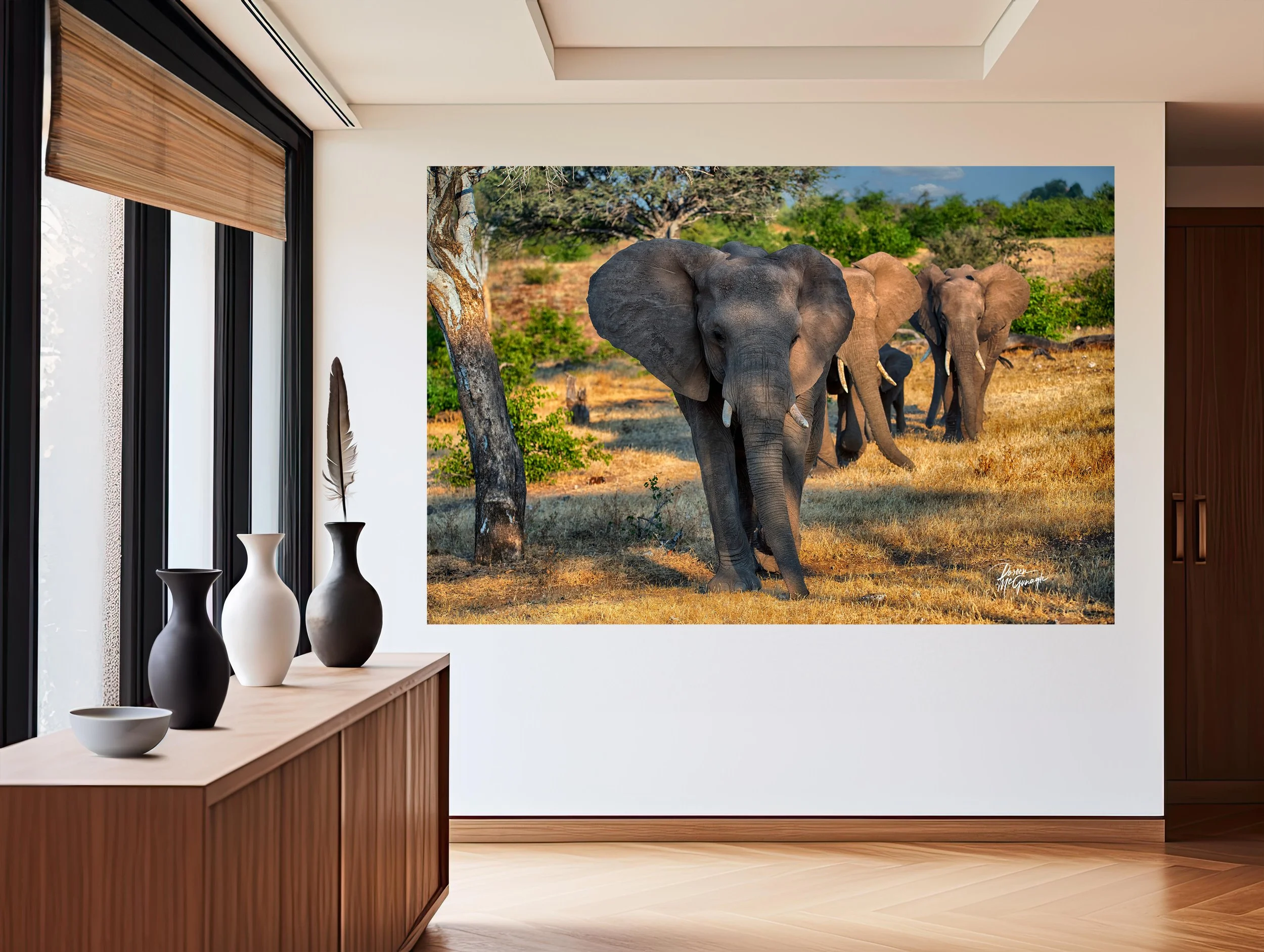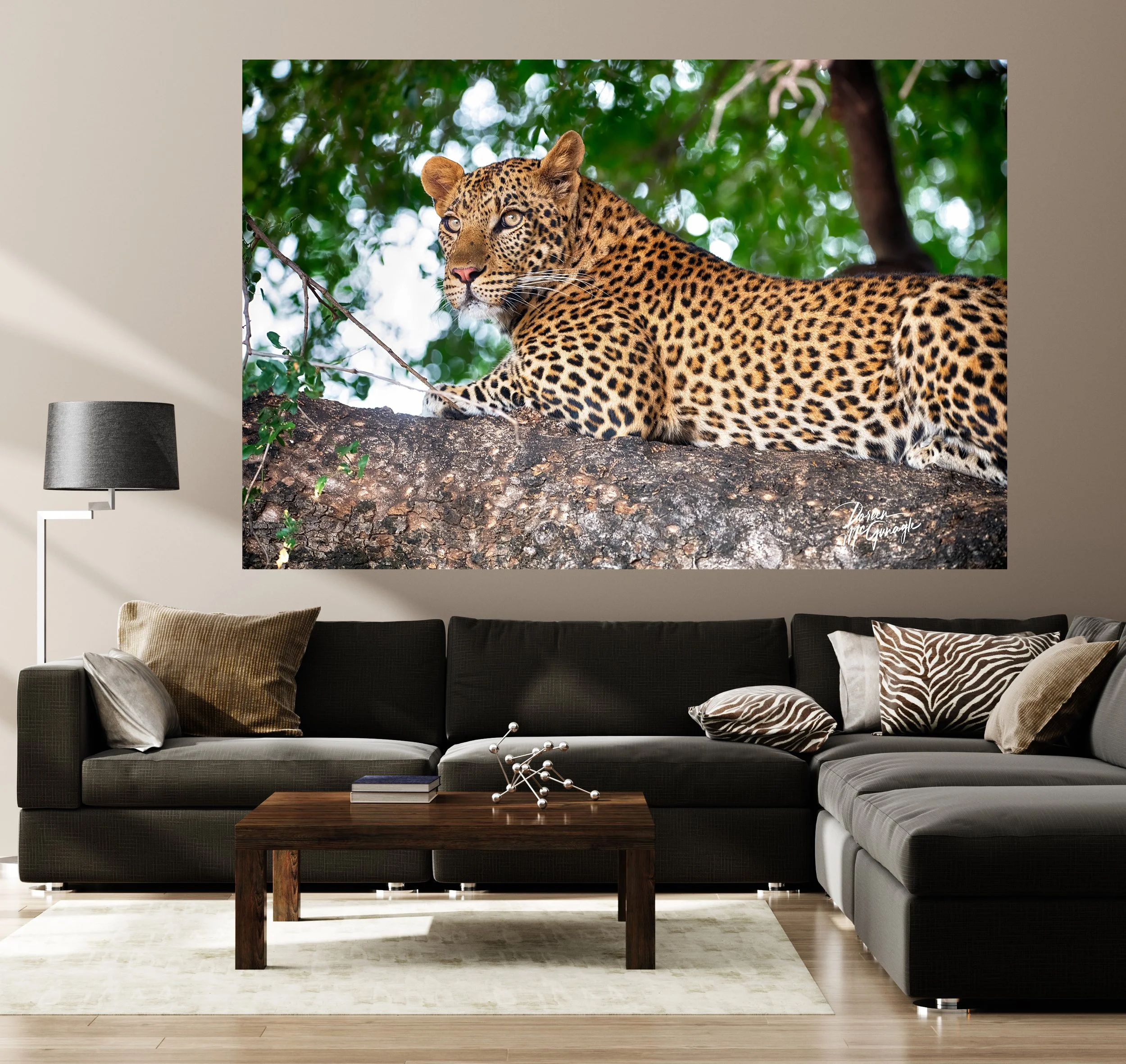Capturing the Beauty of Endangered Species
The beauty of endangered species is a captivating subject. It's a blend of awe, admiration, and a sense of urgency.
Majestic Giants of Botswana
Experience the beauty and grace of Majestic Giants of Botswana, a breathtaking photograph capturing the essence of wildlife in their natural habitat.
Large Wall Art Limited Edition 20
Botswana 2983-90 c2024 | Africa | Learn More
Photography plays a crucial role in this narrative. It's not just about capturing stunning images. It's about telling a story, raising awareness, and inspiring action.
This endeavor includes fine art, environmental, conservation, and nature photography. Each has its unique approach and impact.
This article delves into the world of endangered species beauty through the lens. It explores the techniques, challenges, and ethical considerations involved.
Whether you're a photography enthusiast, an environmentalist, or simply curious, join us on this journey. Let's explore how photography can contribute to the conservation of these beautiful creatures.
The Plight of Endangered Species
Endangered species are those at risk of extinction. Their numbers are dwindling due to various factors.
Leopard Serenity
Immerse yourself in the breathtaking beauty of "Leopard's Serenity," a mesmerizing artwork that captures the majestic essence of a leopard in its natural habitat.
Large Wall Art Limited Edition 20
Botswana 850_22 c2024 | Africa | Learn more
Habitat loss, climate change, and poaching are among the main threats, and human activities often drive these issues.
The loss of these species is not just an environmental issue. It threatens biodiversity and the balance of our ecosystems.
Through photography, we can highlight their plight, inspire people to take action and contribute to their conservation.
The Role of Photography in Conservation
Photography plays a crucial role in conservation. It's a powerful tool to raise awareness about endangered species.
Through images, we can tell stories that words alone cannot. We can evoke emotions and inspire action.
Photographs of endangered species can influence public opinion. They can also shape policy-making.
In essence, photography is a bridge. It connects the public with the often unseen world of endangered species.
Fine Art Photography and Endangered Species
Fine art photography brings a unique perspective to the plight of endangered species. It's not just about capturing an image.
It's about creating a piece of art. This art can provoke thought and stimulate dialogue.
Through fine art photography, we can present endangered species in a new light, challenge perceptions, and inspire change.
Environmental Photography: A Tool for Awareness
Environmental photography focuses on the habitats of endangered species. It highlights the impact of human activities on these habitats.
Through this form of photography, we can show the direct link between our actions and the survival of these species.
Environmental photography can be a wake-up call. It can motivate us to rethink our behaviors and choices.
The Impact of Conservation Photography
Conservation photography has a long history. It has evolved, but its goal remains the same.
It aims to document the beauty and plight of endangered species. It seeks to inspire conservation efforts.
Conservation photography has been successful in aiding numerous campaigns. It continues to be a vital tool in the fight for biodiversity.
Embracing Nature Photography for Education
Nature photography is not just about capturing beautiful images. It's also about education.
Through nature photography, we can learn about the behaviors and habitats of endangered species. We can gain a deeper understanding of their needs and threats.
This knowledge is crucial. It can guide our actions toward the preservation of these species.
Ethical Considerations in Wildlife Photography
Photographing endangered species comes with ethical considerations. The welfare of the species must always come first.
Disturbance to the species or their habitat should be minimized. Respect for wildlife is paramount.
Photographers must also be aware of legal aspects. Some species and habitats are protected by law.
In essence, ethical wildlife photography is about balance. It's about capturing the beauty of endangered species without causing harm.
Techniques and Challenges in Capturing Endangered Species
Photographing endangered species is not without challenges. Accessing their habitats can be difficult.
Some species are elusive or nocturnal. This makes them hard to photograph.
Photographers often use innovative technologies. Drones and remote photography can minimize disturbance.
Despite the challenges, the reward is immense. Capturing the beauty of these species is a unique privilege.
Tips for Aspiring Conservation Photographers
For those interested in conservation photography, continuous learning is vital. Stay updated with conservation issues.
Respect for wildlife is crucial. Patience and sensitivity are also necessary.
Collaboration can enhance your work. Consider projects with scientists or indigenous communities.
Finally, remember the power of your images. They can inspire action and foster conservation efforts.
The Future of Endangered Species Beauty Through the Lens
The future of endangered species photography is promising. New technologies are enhancing the field.
Virtual reality and immersive experiences can amplify the impact of images and bring viewers closer to the species.
Photography will continue to play a key role in conservation. It can support the recovery of endangered species.
The beauty of endangered species captured through the lens will continue to inspire, mobilize communities, influence policies, and ensure these species are not forgotten.
Conclusion: The Lasting Impact of Visual Storytelling
Photography has a lasting impact. It creates a legacy for species that may go extinct.
Images of endangered species can stir emotions. They can inspire action towards their conservation.
Visual storytelling is powerful. It can influence public opinion and policy-making.
In conclusion, capturing the beauty of endangered species is crucial. It's a blend of art, science, and activism.
Explore our online gallery of limited-edition conservation fine art prints. Join us in celebrating and preserving the beauty of our natural world through our exquisite collection of fine art photography.


